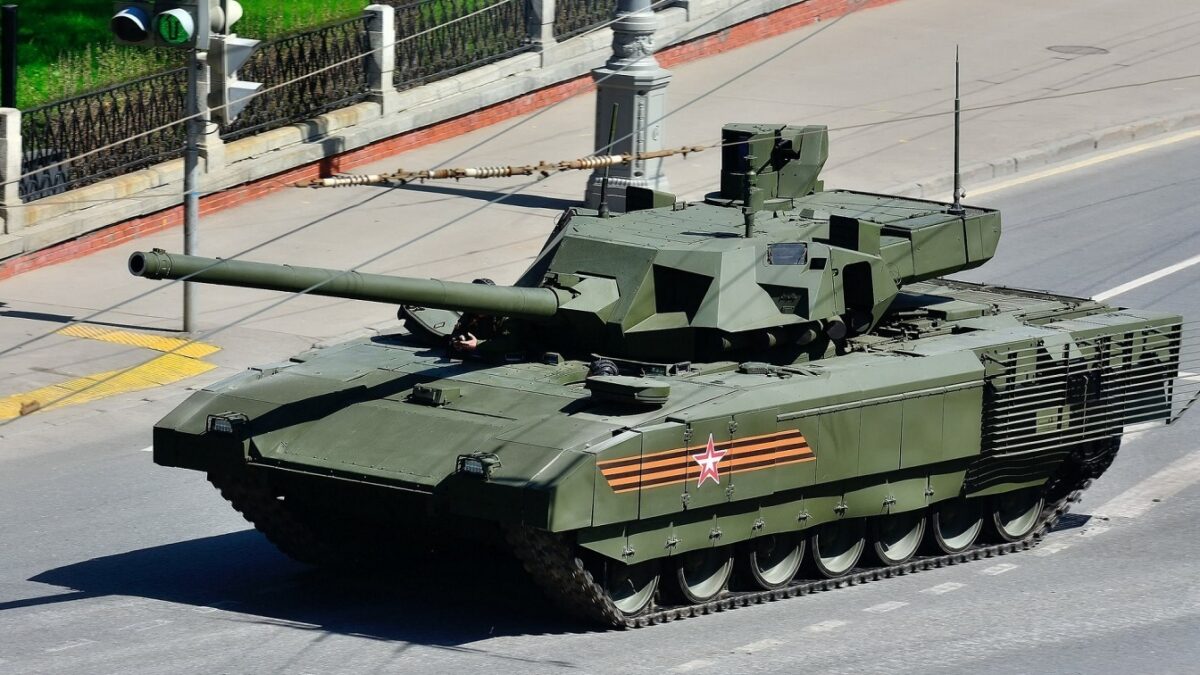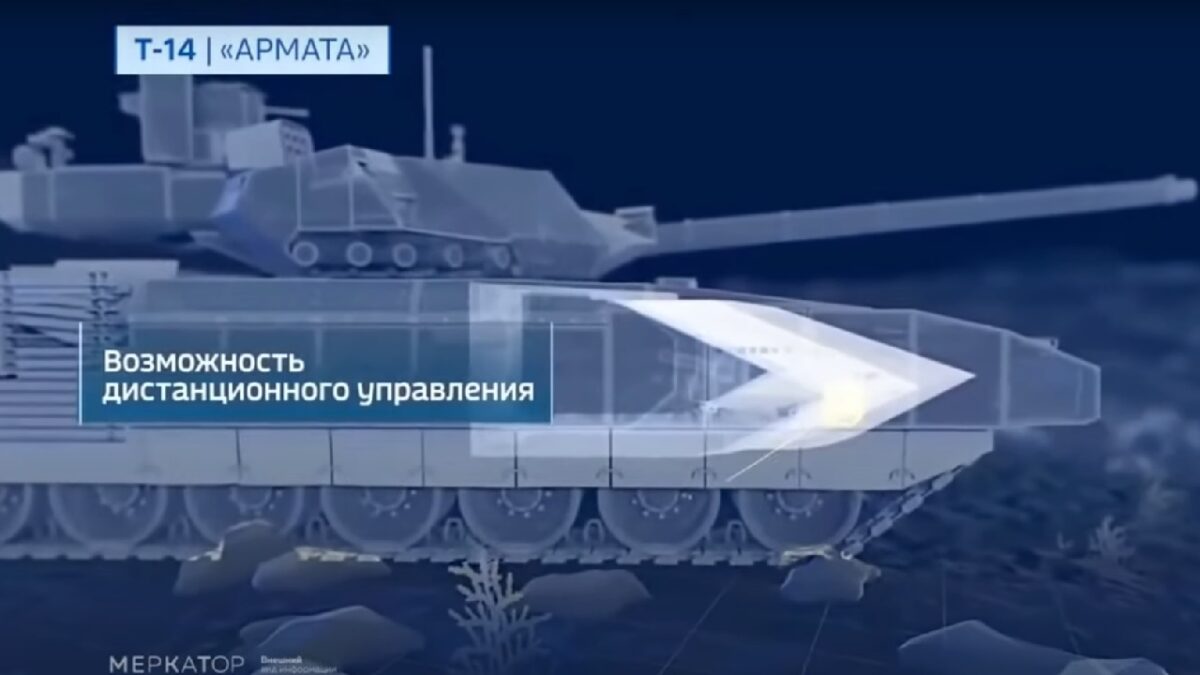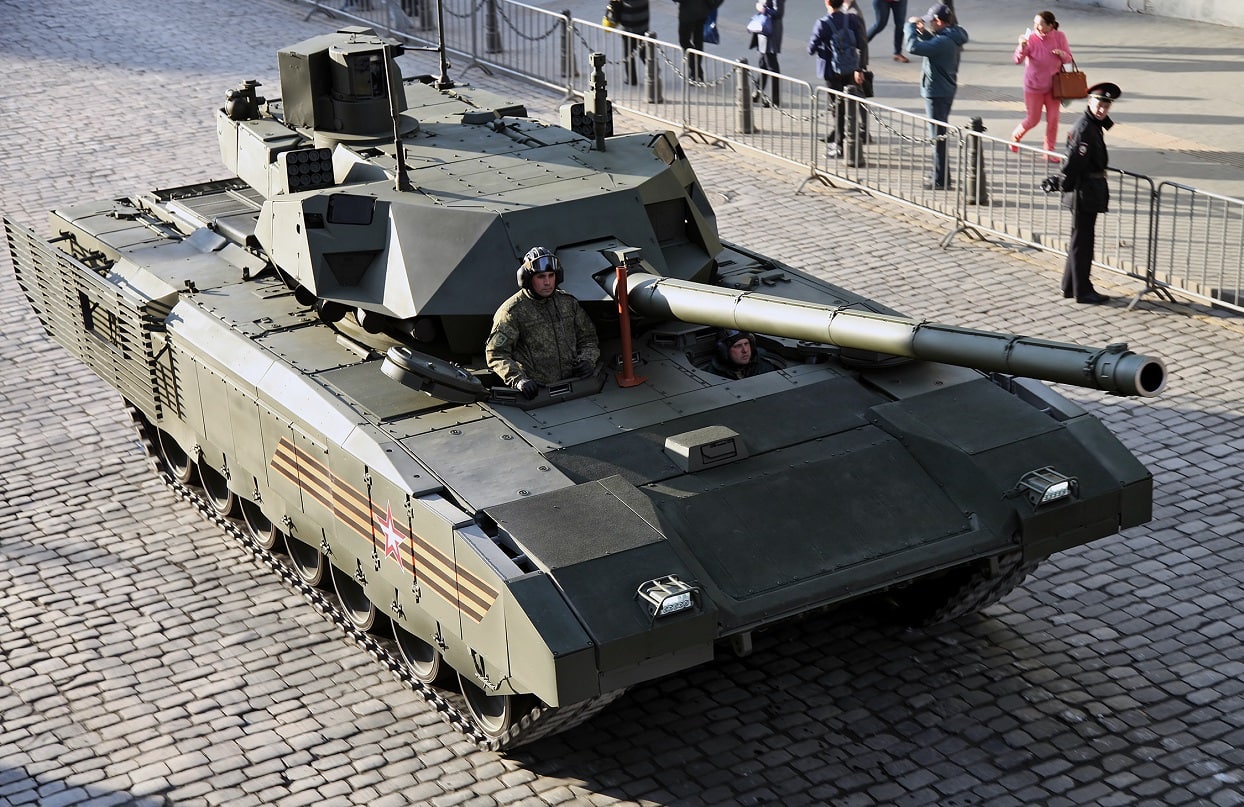Summary: The T-14 Armata, Russia’s advanced main battle tank, has sparked significant interest for its reported lighter weight, speed, and deployability compared to the U.S. Abrams tank. Weighing in at 55 tons, the T-14 boasts a top speed of 55 mph and advanced thermal targeting sights, claiming daytime detection and engagement ranges up to 5 km and 3.5 km at night. These capabilities suggest a highly mobile platform capable of supporting infantry in diverse terrain. However, the T-14’s lighter weight raises questions about its survivability, particularly against the Abrams, which has proven its effectiveness in tank-on-tank engagements with advanced thermal sights and armor penetration capabilities.
Russia’s T-14 Armata vs. U.S. Abrams: A New Era of Tank Warfare Looms in Ukraine
Russian media reports claim the T-14 is lighter, faster, and more deployable at 55 tons, much lighter than the 70-ton U.S. Abrams, and it is now possible that these two tanks could engage in direct combat in Ukraine.
The T-14 is also reported to be faster than most tanks with speeds up to 55mph, something that enables greater mobility in support of infantry crossing bridges, traveling through urban areas, or more narrow passageways. The question is whether the T-14 is less survivable due to its being lighter weight than an Abrams, something that likely depends upon its armor configuration and countermeasures such as active protection systems.
How would a T-14 perform in combat against an export variant of the US Abrams? Interestingly, the effectiveness of tanks in warfare pertains heavily to the range and resolution of their thermal sights. During the famous tank battles in the Gulf War, the U.S. Abrams was able to see and destroy Iraqi T-72s at ranges where it could not itself be seen, an advantage that enabled the tank to prevail in tank-on-tank battles.
As for the T-14, Russian news reports such as GRU Pycckoe, say the T-14 thermal targeting sights can detect and destroy targets during the daytime out to ranges of 5km and can reach 3.5km at night. While, quite naturally, the range and particular technical capabilities of the U.S. Army’s emerging tank sights are not available for security reasons, upgraded variants of the Abrams have advanced forward-looking infrared sensors and thermal sights likely able to operate at considerable ranges.
As for its weapons, a report in Popular Mechanics from several years ago says the T-14’s new, now-in-development 3UBK21 Sprinter missile can hit ranges of more than seven miles, according to the report. The Armata’s current round, the 9M119 Refleks, has a range of 3.1 miles (roughly comparable to the current Abrams) and can penetrate up to 900 millimeters of armor, Popular Mechanics writes.A report from hotcars.com, presents a number of interesting technical facts about the Armata, including its 1,500-2,000 horsepower diesel engine.
The article argues that its engine is more powerful than a U.S. Abrams due to its having a better thrust-to-weight ratio, meaning that a 1,500-horsepower Armata engine drives a 55-ton tank, whereas an Abrams 1,500 horsepower turbo gasoline engine powers a heavier tank at 70-tons. The largest advantage of the T-14, however, may be its unmanned turret, which of course greatly reduces risk otherwise associated with having a manned gunner on top of the tank.Unmanned turrets, perhaps using a high degree of automation, robotics, and human controls from the main crew compartment, have been under development in the U.S. for many years, so it is not clear how much of an advantage that might be, if any. Russia’s T-14 Armata main battle tank might be operating in the war in Ukraine if recent reports are to be believed. If so, what is the MBT’s impact?
There are several key variables to consider when answering that question, including ability to mass and tactical dynamics.Russian news reports and other assessments of the T-14 Armata have hyped the tank as having advanced weaponry, composite armor, an unmanned turret, and speeds reaching up to 55 miles per hour. Some of this may be difficult to confirm, and the combat value of technological advances depends on their being paired with effective tactics.
The other key question pertains to the strength of the T-14’s armor composition. At 55 tons, it seems unlikely that a T-14 Armata would prove as survivable as the larger, heavier T-90 and T-72 tanks. However, perhaps Russian innovators discovered newer kinds of blended composite materials able to provide unparalleled survivability at much lower weights. Whether they have is largely unknown and quite relevant to the tank’s performance.
Regardless of range, T-14s might be vulnerable to Ukraine’s anti-armor tactics and weaponry. Dispersed groups of dismounted fighters using buildings and terrain to obscure their positions might be effective against T-14 tanks. These are formations the Ukrainians have already employed to great effect, so while advanced thermal sights might see Ukrainian armored vehicles at impactful ranges, they are not necessarily immune to Ukraine’s tactics. If T-14s prove to be vulnerable to Javelins, Carl Gustafs, and NLAWs, then long-range, high-resolution thermal sights might not be as impactful.

T-14 Armata Tank. Image Credit: Creative Commons.

T-14 Armata Screenshot

Russia T-14 Armata Tank. Image Credit: YouTube Screenshot.
About the Author
Kris Osborn is the Military Affairs Editor of 19FortyFive and President of Warrior Maven – Center for Military Modernization. Osborn previously served at the Pentagon as a Highly Qualified Expert with the Office of the Assistant Secretary of the Army—Acquisition, Logistics & Technology. Osborn has also worked as an anchor and on-air military specialist at national TV networks. He has appeared as a guest military expert on Fox News, MSNBC, The Military Channel, and The History Channel. He also has a Masters Degree in Comparative Literature from Columbia University.

